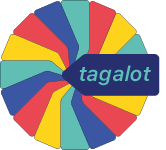Tagalot Cards s a retro-style app for the iPhone and iPad, which simulates the keypad of an old 80-column hand card punch.
Tagalot Cards can be used by businesses looking for a different promotional message, educationalists working in computer history or encryption and anyone who just wants to create concise and out of the ordinary messages.
“Punch” or just cheat and type your message. The optional encryption will only be up 12-bit (holes) so should not challenge the security services too much, but a fun way to introduce students to the subject!
The app is free with no ads. Enjoy!
Four examples, click on left or right to view each card.
( 1 ) Basic card, with punched (blue text) message and edited card ‘wash’ text, default option settings.
( 2 ) Card with animated GIF format option selected
( 3 ) Card with a panorama photo added, no ‘wash’ text and holes/rows hidden.
( 4 ) Pre-set image used when a code table is exported.
- Create and send card-image messages “punched” on the displayed key-pad. Key combinations are used to punch each character. Use the Codes button on the key-pad view for a table of key combinations. If you prefer not to punch your cards, simply type your message in the card edit option. However, “punched” messages will appear in blue text so recipients will know when you have used your punching skills!
- Import Tagalot cards created by other users. View hidden messages and cryptic code tables created by other Tagalot Cards users.
- Share a photo or use a promotional image as a card background. Panorama photos work well! Images below 100px in width or height get tiled.
- Option to create an animated gif to type your message out.
- Create hidden messages and hide punch holes and/or row numbers to when including a photo.
- Create your own unique code tables to encode messages, with up to 5 “holes” per character. Select your custom table, and type your message as “punching” up to 5 keys per character will take forever!Send as a secret card.
- Secret and secure cards have no decode tables included; the table must be provided separately to your recipients, either as an exported special code table card image or in a text form. The recipient can just load the code table card or create the code table manually from a text version.
- Send your own photo or image. Use the background image as the main image to send your message, also with a secure setting if required. Appears as the original image but can be imported to Tagalot Cards to view the message.
- Option to create an image optimised for Instagram.
- Main screens have a help guide on the info (i) button.
Keypad screen on the iPad. ‘Eject’ key opens the Card view.
Card view on the iPhone. Edit, import or share.
Card Edit view on the iPad, with panorama photo added,
‘wash’ text removed, holes and row numbers hidden.
Codes screen on the iPhone. Punching guide, copy, export
or select other tables from here, edit a custom table.
Code table edit screen on the iPhone.
Create your own cryptic punch code here.
The 80-column punched card was widely used for data entry for over forty years, up to the 1980’s, when it was replaced by direct entry methods using displays and keyboards. The cards were mainly punched on mechanised punches with qwerty keyboards, but the hand punch would be used for low volume data entry, such as corrections or to replace damaged cards.
Programmers would write their program instructions onto sheets, formatted according to the language, such as assembler, COBOL, Fortran, etc. The sheets would then be sent to the “data prep” department to be punched onto the 80-column cards, which would then be passed to the computer operators for compilation and testing. Testing was typically just once a day, possibly overnight, more often if you were lucky and had additional machine time. So a hand punch was often found in the programming department, for making small corrections to the program, so you could catch the next test slot without delay.
Standard code sets evolved around the 80-column media, so generally the alphabetic and numeric characters had common punched hole combinations between different computer manufacturers, with some variations for the less used special characters. Even non-visual codes such as tab, backspace, etc could be punched with some code sets.
The waste product of these cards are the rectangular pieces punched out and known as “chad”. Chad would turn up in various places if there was a joker about, such as hats, lunch boxes, car exhaust pipes, etc, and also made quite good confetti!
Tagalot Cards is the result of a pilot project using images to carry metadata and the functionality may appear in a future release of Tagalot Contacts.
More information
There is plenty of information on the web for the 80-column punched card. The following are acknowledgements of the main sources we used in the development of this app.
Doug Jones’ Punched Card Codes – http://homepage.cs.uiowa.edu/~jones/cards/codes.html
Wikipedia – 80-col Hand Punch Image – https://en.wikipedia.org/wiki/Keypunch ( Image used under the Creative Commons licence – http://creativecommons.org/licenses/by-sa/3.0 )
Image of chad: By Marcin Wichary – Flickr: [1], CC BY 2.0, https://commons.wikimedia.org/w/index.php?curid=17397435









